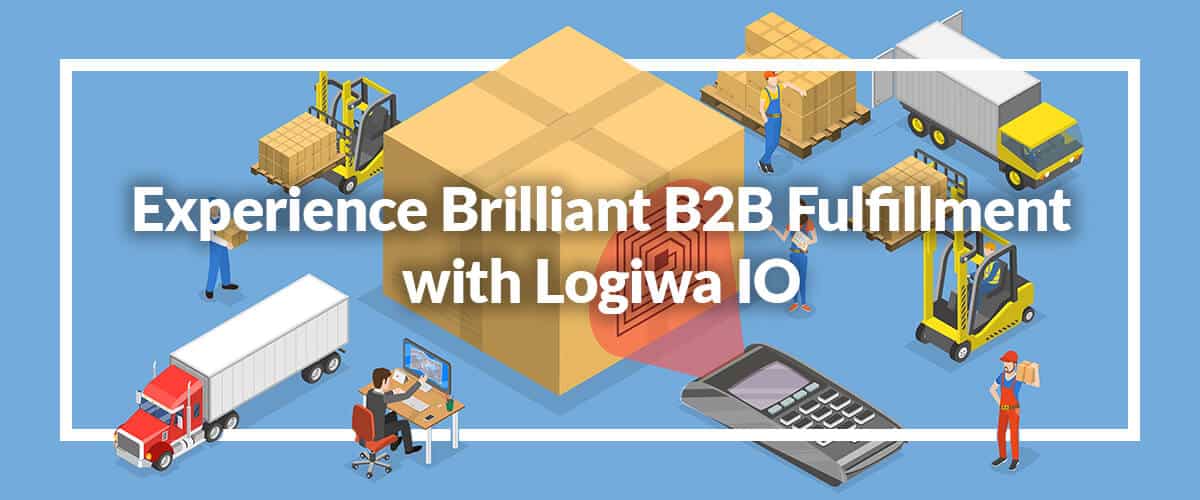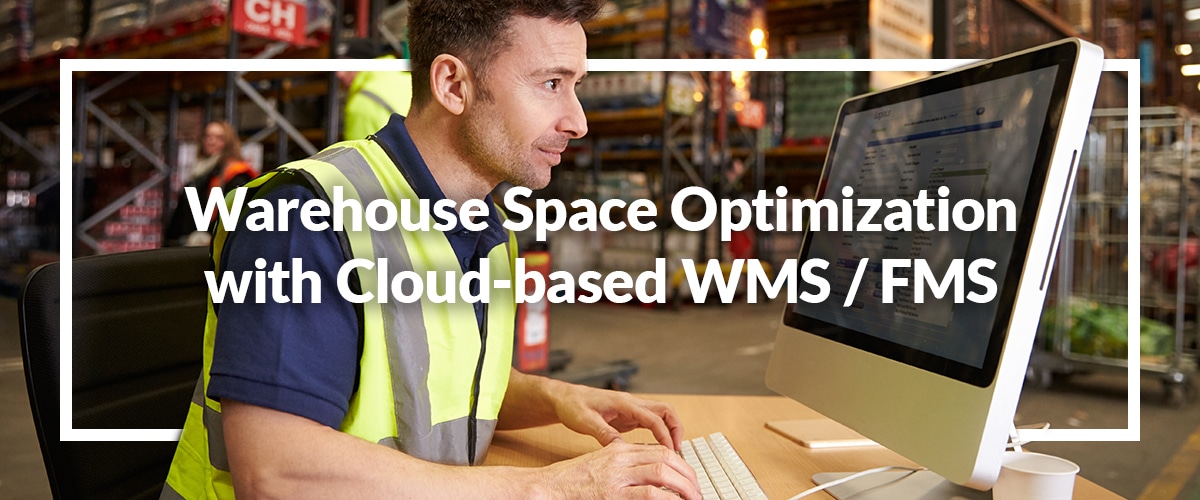Warehouse Robotics and WMS Software: Everything You Need to Know
Originally published on November 8, 2023 by Erhan Musaoglu, Updated on April 18, 2024
Dive into the world of warehouse robotics and warehouse management software (WMS) and discover how these technologies are revolutionizing the industry. In this comprehensive article, you’ll explore the history and various types of warehouse robotics, their benefits, and considerations for implementing them in your operations, all within the context of integrating with WMS systems.
Key Takeaways:
- Warehouse robotics refers to unmanned machines capable of performing specific tasks within a warehouse, with the aim of relieving human workers from repetitive and potentially dangerous tasks.
- The surge in warehouse robotics automation is primarily driven by advancements in AI and machine learning, better sensors and response capabilities, and the integration with WMS software.
- Different types of warehouse robotics include Automated Guided Vehicles (AGVs), Autonomous Mobile Robots (AMRs), aerial drones, and Automated Storage and Retrieval Systems (AS/RS), each offering unique benefits.
- Companies adopting warehouse robotics are witnessing numerous benefits such as lower error rates, adaptable workforce, increased warehouse safety, higher customer satisfaction, and an innovative brand image.
- Robotics as a Service (RaaS) allows companies to adopt robotic technologies via subscription, reducing financial burdens and offering flexibility to test and implement robotic solutions gradually.
Imagine your warehouse labor costs are cut by 70%. Your warehouse operates during the day and night at equal costs. Your inventory counts are updated daily.
Believe it or not, this is a reality with today’s warehouse robotics.
By the end of this post, you’ll learn how you can duplicate these results by utilizing warehouse robotics to your operations. We’re going to cover a lot, including:
- What Is Warehouse Robotics?
- History of Warehouse Robotics in the Supply Chain
- Why Is Warehouse Robotics Automation Surging?
- What Sort of Robots Could Work in Your Warehouse?
- What Benefits Are Companies Seeing by Adopting Robotics in the Warehouse?
- Should You Bring Robots Into Your Warehouses?
- Robotics as a Service (RaaS)
What Is Warehouse Robotics?
Warehouse robotics refers to unmanned machines capable of performing specific tasks within a warehouse or distribution center. Their aim? To relieve human workers of repetitive and dangerous tasks through smart automation. By combinating physical machinery with modern software, this type of robotics helps warehouses achieve higher levels of efficiency than strictly manual operations and improve the environmental conditions of facilities themselves.
While there are many different types of robots and fulfillment automation systems, the majority are programmed to accomplish one particular warehousing role. This can include tasks related to receiving/sorting, transporting materials, and replenishing stock, as well as picking and packing operations, waste disposal, and space optimization.
History of Warehouse Robotics in the Supply Chain
The robots to be used in supply chain operations were founded in manufacturing. George Devol filed the first robotics patent in 1954 (granted in 1961), and his company, Unimation, produced the first industrial robot in 1956. That first robot was capable of moving material about a dozen feet or so.
General Motors followed suit and installed their first robot in a plant in New Jersey in 1962. For a long time, robots were only suited for work in industrial manufacturing because they weren’t safe for people to be around while they were in use.
The first robots were large robotic arms that could move according to programming. Innovators knew that people would dislike machines taking over people’s jobs, so they initially focused on shifting potentially dangerous or harmful jobs to robots.
This strategy was largely successful and led to robotics technology being adopted for dangerous situations, such as welding and lifting heavy machinery.
BONUS: Before you read further, download our Warehouse Management Whitepaper to see how Logiwa uses real-time data to help you optimize your warehouse processes.
Why Is Warehouse Robotics Automation Surging?
Robotics engineers have worked hard over the last few decades to integrate new technological developments, like artificial intelligence (AI) and the Internet of Things (IoT), with automated robotics technology.
Innovative companies that have warehouses in their supply chains love the results that effective automation can bring.
But what allows robots to operate in warehouses autonomously?
It’s primarily three things:
- AI and machine learning
- Better sensors and response capability
- WMS software
Artificial Intelligence in Your Warehouse
According to McKinsey & Co, the transportation and logistics industry stands to gain 89% incremental value over time through AI adoption. Retail could see 87% incremental value over time. So no matter how you analyze it, your business can benefit from AI adoption.
Artificial intelligence generally refers to a computer’s ability to execute cognitive functions we normally only expect from human minds, such as learning, reasoning, and problem-solving.
Often, AI is divided into two categories for supply chain applications:
-
- Augmentation: AI that assists humans in their day-to-day tasks.
- Automation: AI that can function without human interference.
Sensors and Response Capability Have Made Robots Safer
When robots were first introduced into the supply chain, we didn’t have the knowledge to allow them to perceive their surroundings. Now, in addition to visual and auditory sensors, warehouse robots can be equipped with thermal and haptic sensors.
Thermal sensors measure ambient temperature on a surface. Haptic sensors allow robots to perceive touch. When paired with AI and machine learning, the data from those sensors allow robots to make decisions based on input from their surroundings.
Warehouse Robotics & WMS Software
Integrated warehouse management software (WMS software) or 3PL systems form the hub of your warehouse operations. Information can flow seamlessly from your sales channels to the order fulfillment system, and then to picking and packing. Accurate data is what keeps things moving without a hitch.
Some of the robot types we’ll describe later in this article come with a WMS as part of their system. However, most of the robot types we’re going to explore can be integrated into your warehouse operations regardless of your operating software. That said, you still need accurate inventory data to feed the robots to optimally benefit from their use.
As we mentioned, AI allows robots to make decisions based on data. Therefore, incorrect data can result in incorrect decisions.
Types of Warehouse Robotics
Today’s warehouse robotics include both stationary and mobile robots, and all offer their own unique benefits. Choosing your ideal robotics solution depends not only on the current size and scope of your operation, but your long-term goals as well. Here are the most common categories of warehouse robotics, how they work within a facility, and the advantages of using them for high-volume fulfillment.
Automated Guided Vehicles
Automated guided vehicles (AGVs) and their smaller cousins, automated guided carts (AGCs), transport inventory around your warehouse. They normally follow magnetic stripes or a track laid out on your warehouse floor.
For AGVs that don’t follow a track, they possess additional safety scanners that allow them to be used with manual vehicles. They’re also loaded with a map of your warehouse and the locations of all inventory.
2XL, a logistics company in Belgium, used automated guided vehicles to significantly improve their warehouse efficiency. They changed their model to include robotics to increase security and stability.
Their large warehouses meant that workers were spending most of their time just moving from one area to the next, so it only made sense to transfer that work to robotics technology
In addition to saving valuable time that people could use elsewhere, 2XL found that using robotics technology meant they were able to work around the clock. AGVs work nights and weekends at the same cost as operating during the day, which improves warehouse efficiency and cuts costs. AGVs only require 8 minutes to recharge, which means they spend very little time out of commission.
Because of the amazing productivity and cost-saving capabilities of AGVs, the new system paid for itself just one year after installation.
Autonomous Mobile Robots
Autonomous Mobile Robots (AMRs) are like AGVs in that they use sensor technology to deliver inventory around a warehouse. However, unlike AGVs, they don’t require a set track or preset route between locations. AMRs understand their environment through the use of computers, onboard sensors, and maps.
These small and nimble robots can identify the information on each package and sort it precisely. AMRs can move throughout the warehouse because they create their own routes based on the operation needed. They can reroute when necessary and avoid obstacles in their environment. These robots offer efficiency, accuracy, and security during the sorting process.
AMR robots also help to cut down on redundant processes like sorting so that workers can take on more creative and collaborative roles. Humans are sometimes more prone to error when they find a task too boring. Today’s robots, on the other hand, deliver consistent accuracy regardless of how tedious a process is. As a result, warehouses enjoy a higher level of inventory accuracy.
Not only do AMRs help with the picking and sorting process, but they can also be used to conduct daily inventory cycle counts.
Counting robots like the TagSurveyor can scan inventory from up to 25 feet away thanks to RFID sensors and scanners. Instead of counting inventory every few months, your warehouse could know its inventory count every day.
Not only would your inventory data be more accurate, but it would also actively discourage inventory theft. Chinese warehouses are one of the fastest-growing segments in China’s economy. In fact, 40% of the world’s parcels are delivered to China.
This equates to 300 million parcels a day. Their desire for speed and accuracy led to the creation of autonomous mobile robots. AMRs can sort up to an impressive 18,000 parcels an hour and reduce manual labor costs by 70%.
Aerial Drones
Aerial drones have been on everyone’s radar since 2013 when Jeff Bezos introduced the concept of the Amazon “Octocopter” drone that delivers packages straight to their customers’ doors. Although the drone delivery idea has yet to take off, drones still have amazing potential for the logistics industry.
Drones can help optimize warehouse inventory processes by quickly scanning locations for automated inventory. They can connect automatically to your WMS (if your system can integrate) to access and verify existing inventory information.
Aerial drones don’t need markers or lasers for guidance. They use optical systems along with deep learning technologies and computer vision to navigate warehouses. Moreover, they don’t take up valuable space in your warehouse and aren’t likely to get in the way of people or other robotic devices.
Drones can travel quickly to hard-to-reach and dangerous places. They can scan inventory both high and low much faster than a person and keep the most accurate count uploaded immediately into your warehouse inventory management software.
Most of the drones being used today are augmentation robots, controlled by an operator on mobile devices, like in the video below. However, the end goal for aerial drone technology will be to be more autonomous, requiring little to no human assistance.
Warehouse Robotics: Automated Storage and Retrieval Systems
Automated storage and retrieval systems (AS/RS) are a technology that moves inventory in and out of storage. It’s typically paired with warehouse execution software that directs operations.
AS/RS systems come in different forms depending on the type of tasks, the system needed, or the goods that they will be working with. They can work either as a shuttle on a fixed track or a crane that retrieves goods between aisles. Although there are now aisle climbing robots, like the Skypod, that can also retrieve customer orders.
Order picking can account for 50% or more of your warehouse labor costs, especially for large warehouses. By cutting down on the number of laborers and time spent on retrieval, workers can concentrate on the more complicated processes, such as packaging and posting goods.
Alibaba, the largest retailer in the world, proved how useful AS/RS can be at their warehouse in China. Using 60 robots, they reduced warehouse labor by 70%. Their robots operate over Wi-Fi to bring inventory to workers to package and post. As a result, their operations skyrocketed and tripled their output.
What Benefits Are Companies Seeing by Adopting Robotics in The Warehouse?
Companies that invest in robotic technology see many tangible and clear benefits for their business. Cutting expenses such as packaging costs and increasing efficiency are some obvious outcomes for most companies, but there are also less obvious advantages to utilizing robotic technology.
Lower Error Rates
Human errors can be costly for businesses and significantly damage profits if work has to be done again to correct a mistake. Robots significantly reduce warehouse costs by doing the work correctly the first time, every time.
Adaptable Workforce
The reality of retail is that there are busy and slow seasons. Robotics allows warehouses to meet increased capacity demands quickly.
During the holiday seasons, for example, it can be difficult to hire and train new employees fast enough to keep up with the results of demand forecasting. Robotics make it easier to handle these increases because they can work around the clock without diminished performance.
Increased Warehouse Safety
Warehouse robotics helps improve facility safety for workers. They take over dangerous jobs that put workers at risk. Now that robots can work effectively side-by-side with humans, robots can take over more dangerous tasks, such as getting inventory from heights or carrying heavy loads.
In addition to warehouse safety, workers (and companies) can expect an increase in morale as mundane and dangerous jobs are taken off of human workers’ plates. Many workers have a reduction in anxiety and stress when robots take over a routine or risky part of their job.
Higher Customer Satisfaction
The increase in delivery speed and decrease in human errors will inevitably increase customer satisfaction. Customer service is critical for maintaining and growing any business. The faster your company can execute operations perfectly, the more customers will come back. You’ll be able to elevate your warehouse ops with a competitive edge.
In addition to better order fulfillment, robotics can afford your workers more time to concentrate on the customer experience. Instead of manual packing slips, robots automate packaging, communication, and follow-up to improve your customer’s experience with your company.
Innovative Brand Image
Besides increased customer satisfaction, robotics can boost your brand image. You can present your company as faster and better than ever. By advertising robotics technology, you signal to potential customers that you are a cutting-edge and innovative brand capable of taking on the challenges of the future.
Should You Bring Robots Into Your Warehouses?
The increase in technology and competition in warehouses means that you need to seriously consider utilizing autonomous robots in your facility. With their ability to improve operations while increasing material handling productivity, accuracy, and customer satisfaction, every warehouse can benefit from robots.
Technology continues to improve and warehouse robotics can be specialized for different operations, so it would be smart to assess your needs. Consider asking yourself the following:
-
- Where are your current warehouse operations bottlenecks?
- Do your workers spend a lot of their time retrieving goods in your large warehouse?
- Do you spend too much time taking inventory counts?
- Do you frequently find yourself running out of goods because of inaccurate inventory?
These are questions to keep in mind as you try to decide what would work best for your operations. Strategically adding robots to your operation means that you can increase your profits, make your customers happy, and create a safe work environment. The question is not whether your warehouse needs robotic technology, but where to start.
Robotics as a Service (RaaS)
Despite the numerous benefits that robots can offer fulfillment operations, many warehouse operators remain wary about making the change. Luckily, the transition to a hybrid workforce (one which includes humans and robots) does not need to happen all at once. In fact, many robotics companies now function on a subscription basis.
Subscription-based robotics, also known as Robotics as a Service (RaaS), allows customers to pay monthly or annual fees rather than purchasing robots outright like forklifts or other equipment. This is good if you are at the start of your robotics journey because it allows you to transition warehouse jobs over to robots at your own preferred pace and experiment with which robotics best serve your warehouse needs!
With RaaS, you can incorporate robots as part of your warehouse operations without taking on overwhelming financial commitments or stressors that come with deployment, integration, and ongoing maintenance. It’s flexible and allows for robots to be used as temporary workers when demand is high and your bandwidth is low.
You simply pay for your installed machines by the hour, at a cost that’s less than hiring another human employee. Robotics subscriptions prioritize operating expenses over capital expenses, so every size operation can have access to robotics in the days ahead. C
Check out Logiwa’s partnership with Locus Robotics to see how combining smart WMS technology with AI-powered robots can transform warehouse operations for total efficiency.
Ready to integrate warehouse robotics with your WMS?
Warehouse robotics and WMS software have become vital components for businesses aiming to enhance their warehouse operations. By leveraging the power of automation, companies can achieve higher efficiency, accuracy, and customer satisfaction while reducing costs. To explore how Logiwa’s intelligent WMS technology can optimize your warehouse with robotics, request a demo today. Empower your warehouse with the latest advancements and gain a competitive edge in the industry.
Robotic Warehouse Systems: FAQ
What is the history of robots in supply chains and warehouse operations?
Robots have been used in supply chains and warehouses since the 1950s. The first industrial robot was developed in 1956, and since then, robots have been steadily integrated into manufacturing and logistics operations. Initially, robots were used in dangerous or repetitive tasks, but advancements in technology have allowed for more sophisticated robotic systems in warehouses.
Why are warehouses choosing to introduce robots into their operations?
Warehouses are introducing robots to improve operational efficiency, increase productivity, reduce labor costs, enhance accuracy, and meet the growing demands of e-commerce. Robots can perform tasks such as picking, sorting, packing, and inventory management with speed and precision, leading to improved warehouse performance.
What are the primary types of robots that can be used in a warehouse?
The primary types of robots used in warehouses include Automated Guided Vehicles (AGVs), Autonomous Mobile Robots (AMRs), aerial drones, and Automated Storage and Retrieval Systems (AS/RS). AGVs and AMRs assist with material transportation, while aerial drones can scan and verify inventory. AS/RS systems automate the storage and retrieval of goods.
What are the benefits of implementing robotic warehouse automation?
Implementing robotic warehouse automation offers several benefits, including increased operational efficiency, higher productivity, reduced labor costs, lower error rates, improved warehouse safety, enhanced customer satisfaction, and a more innovative brand image. Robots can work alongside human workers, optimizing warehouse processes and providing a competitive edge.
How do robots improve warehouse performance?
Robots improve warehouse performance by streamlining processes, increasing accuracy, reducing cycle times, optimizing inventory management, and enabling faster order fulfillment. They can work 24/7 without fatigue, handle repetitive tasks with precision, and provide real-time data insights for better decision-making.
How has artificial intelligence (AI) contributed to warehouse robotics?
Artificial intelligence plays a crucial role in warehouse robotics. AI enables robots to learn, adapt, and make autonomous decisions based on real-time data. It enhances robots’ ability to perceive their surroundings, optimize routes, improve object recognition, and enhance interaction with humans. AI-powered robots can continuously improve their performance through machine learning algorithms.
How have sensors and response capabilities made robots safer in warehouse environments?
Robots are equipped with advanced sensors such as visual, auditory, thermal, and haptical sensors to perceive and respond to their environment. These sensors enable robots to detect obstacles, avoid collisions, ensure safe interactions with humans, and operate in diverse warehouse conditions. Enhanced safety features have made robots more reliable and suitable for warehouse operations.
How does warehouse management software (WMS software) play a role in robotic warehouse systems?
Warehouse management software (WMS software) serves as the central hub for robotic warehouse systems. It facilitates seamless communication between robots, inventory management systems, and other warehouse processes. WMS software enables accurate data flow, optimizes picking routes, coordinates tasks, and provides real-time visibility into inventory levels, improving overall warehouse efficiency.
What are the different types of robots that can work in a warehouse?
Different types of robots that can work in a warehouse include Automated Guided Vehicles (AGVs) and Automated Guided Carts (AGCs) for material transportation, Autonomous Mobile Robots (AMRs) for sorting and inventory management, aerial drones for scanning and inventory verification, and Automated Storage and Retrieval Systems (AS/RS) for efficient storage and retrieval of goods.
What benefits are companies seeing by adopting robotics in their warehouses?
Companies that adopt robotics in their warehouses experience benefits such as cost savings, increased productivity, higher accuracy, improved safety, enhanced customer satisfaction, and a competitive advantage. Robotic automation optimizes warehouse operations, reduces labor costs, minimizes errors, enables faster order fulfillment, and creates a more efficient and streamlined warehouse environment. These benefits lead to improved profitability, better inventory management, and a positive impact on customer satisfaction.
Should I bring robots into my warehouse?
Introducing robots into your warehouse depends on your specific operational needs and goals. Assessing your current pain points, such as bottlenecks in operations, time-consuming tasks, inventory accuracy issues, or labor-intensive processes, can help determine whether robots would be beneficial. If you aim to improve efficiency, accuracy, and overall performance while reducing labor costs, incorporating robotics into your warehouse may be a wise decision.
What is Robotics as a Service (RaaS)?
Robotics as a Service (RaaS) is a subscription-based model that allows customers to access robotics technology without making a large upfront investment. Instead of purchasing robots outright, businesses can pay a monthly or annual fee to utilize robots in their operations. RaaS provides flexibility, scalability, and the opportunity to experiment with different robotics solutions, making it an attractive option for those starting their robotics journey or looking for a more cost-effective approach.
How can warehouse operators benefit from Robotics as a Service (RaaS)?
RaaS enables warehouse operators to incorporate robotics into their operations at a manageable pace, without the financial burden of purchasing and maintaining robots. It allows for a hybrid workforce that combines humans and robots, improving productivity, scalability, and adaptability. With RaaS, warehouses can efficiently handle increased demand during peak seasons, optimize warehouse processes, and achieve higher operational efficiency without significant capital investment.
Can robots be integrated with existing warehouse management software (WMS)?
Yes, robots can be integrated with existing warehouse management software (WMS). While some robot types may come with their own built-in WMS, most robotic systems can be seamlessly integrated into your existing WMS infrastructure. This integration ensures smooth data flow, coordination between robots and other warehouse processes, and real-time visibility into inventory levels. Accurate inventory data is crucial for robots to optimize their operations and maximize their benefits.
How can Logiwa help with warehouse robotics and WMS integration?
Logiwa offers warehouse management software (WMS) solutions that are designed to integrate and optimize warehouse robotics. Their WMS technology can seamlessly connect with AI-powered robots, enabling efficient task coordination, accurate inventory management, and streamlined warehouse operations. By combining smart WMS technology with robotics, Logiwa empowers warehouses to achieve total efficiency, improve productivity, and maximize the benefits of robotic automation.
What are some examples of companies utilizing warehouse robotics successfully?
Several companies have successfully implemented warehouse robotics to enhance their operations. For instance, Alibaba, the largest retailer globally, reduced warehouse labor by 70% using robotics, leading to a significant increase in output. 2XL, a logistics company in Belgium, improved warehouse efficiency by utilizing Automated Guided Vehicles (AGVs) to optimize material transportation. These examples demonstrate the tangible benefits that robotics can bring to different warehouse environments.
Related Terms
inVia Robotics
inVia provides next-generation autonomous mobile robotics and warehouse automation solutions for ecommerce distribution centers and more.
6 River Systems
6 River Systems (6RS) offers autonomous robots, artificial intelligence & operational expertise for 3PL, ecommerce, retail and B2B. Click and learn more now.
Warehouse and Inventory Management Software
Warehouse and inventory management is an essential component of warehouse operations. Do you need to update your system for success? Click to learn more now.
ABCs of warehouse management system
Warehouse management systems can be complex. Explore what is involved and how it can help your warehouse operations.
The Leading Supply Chain Management Software for “New Age” B2C/B2B Fulfillment Businesses
Warehouse Management
Modern digital WMS powers a modern fulfillment experience
Inventory Management
Improve your inventory across your supply chain.





